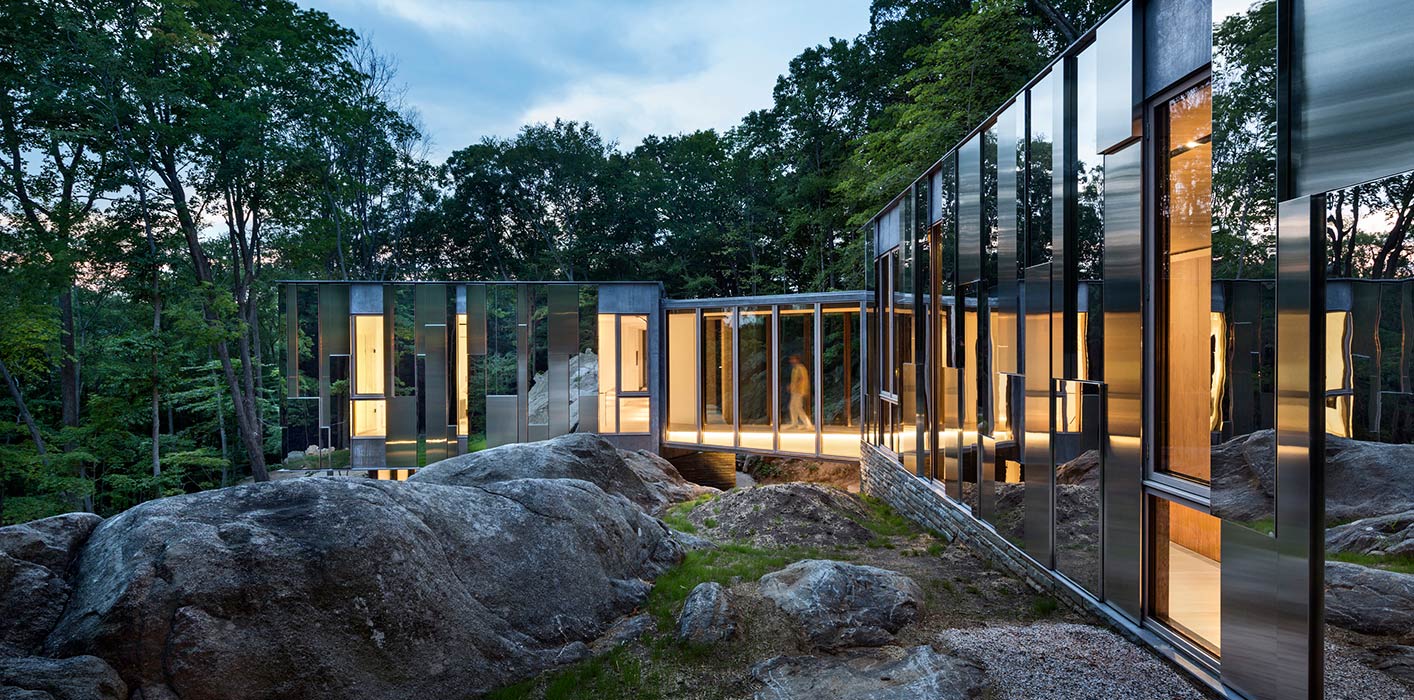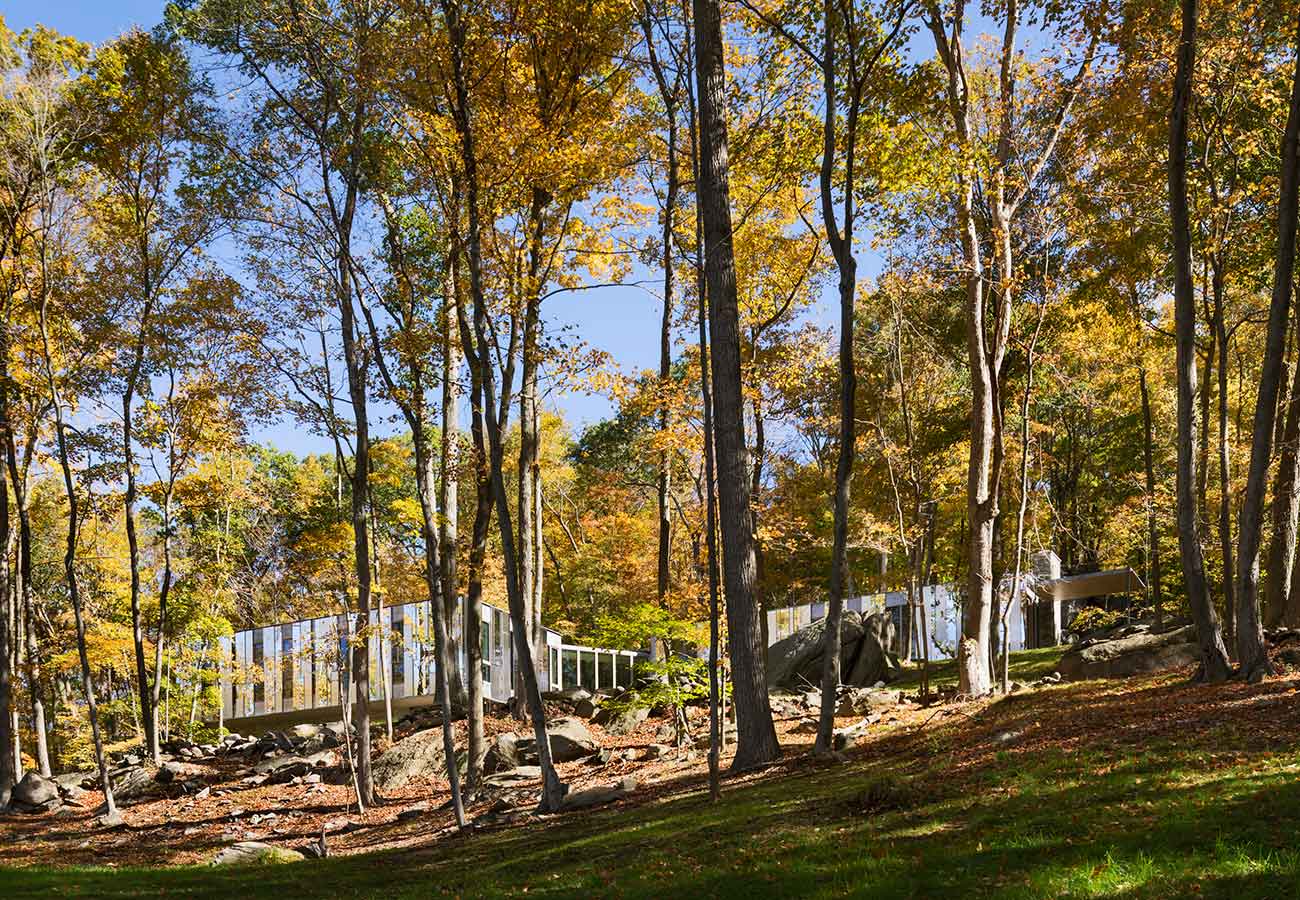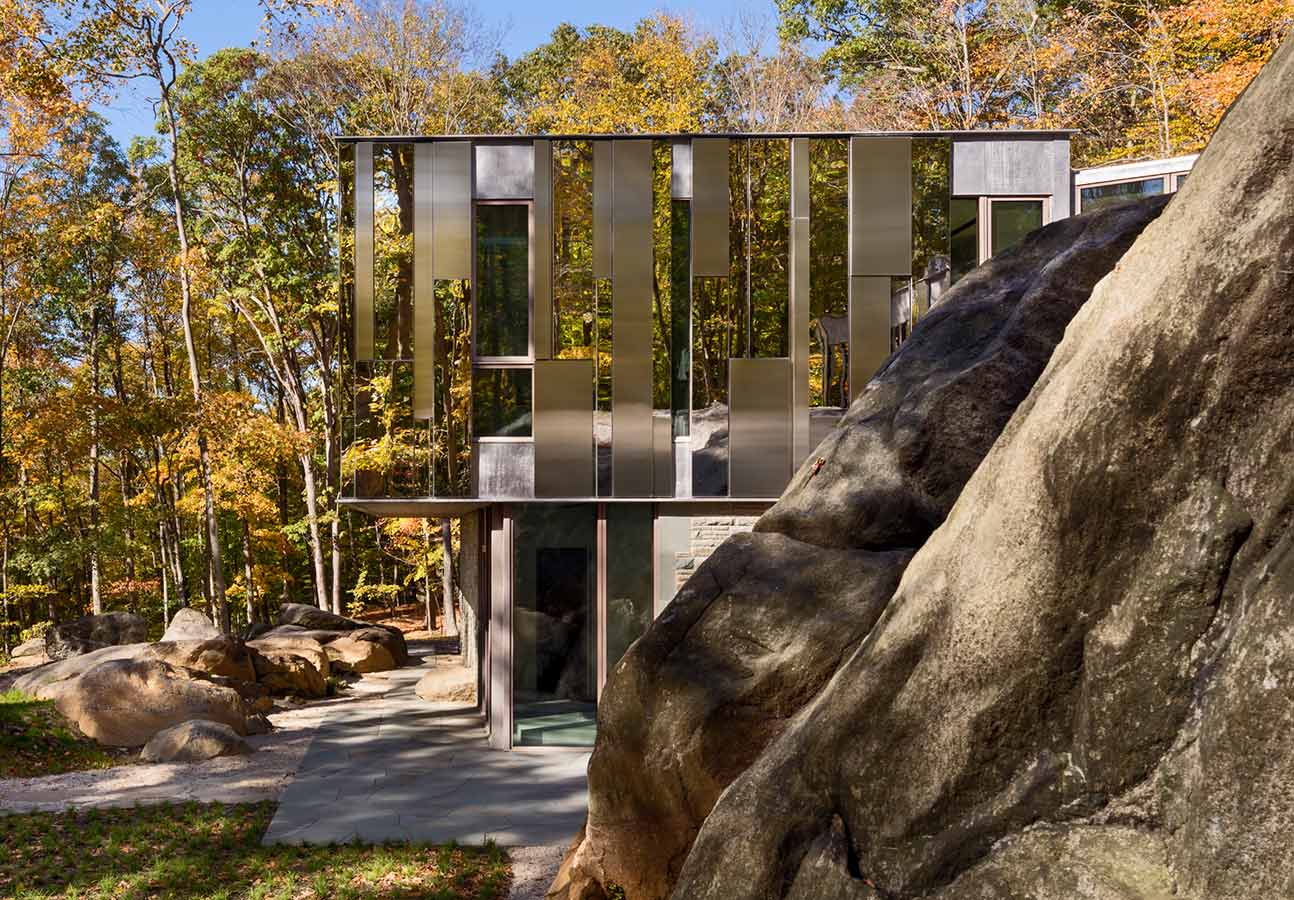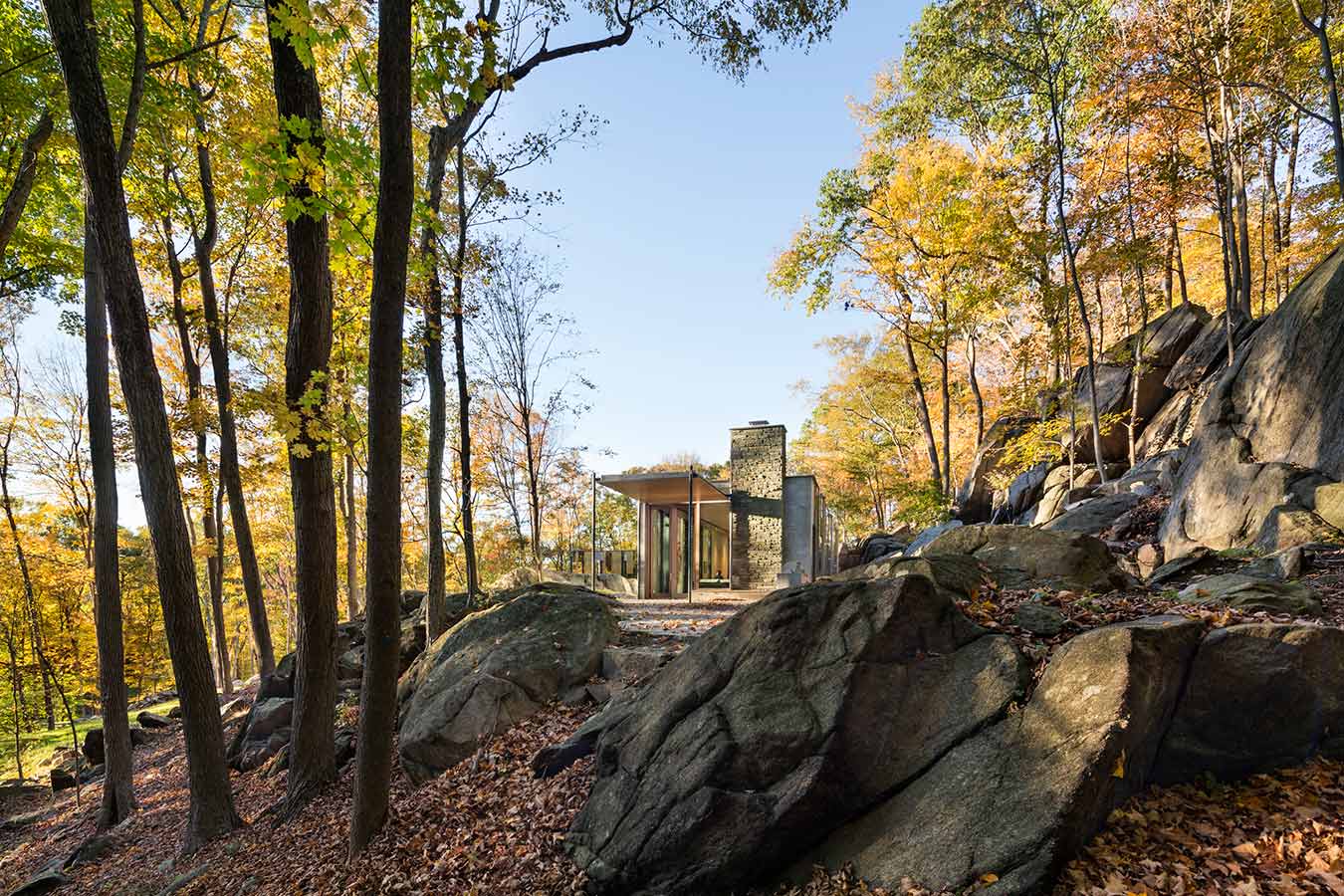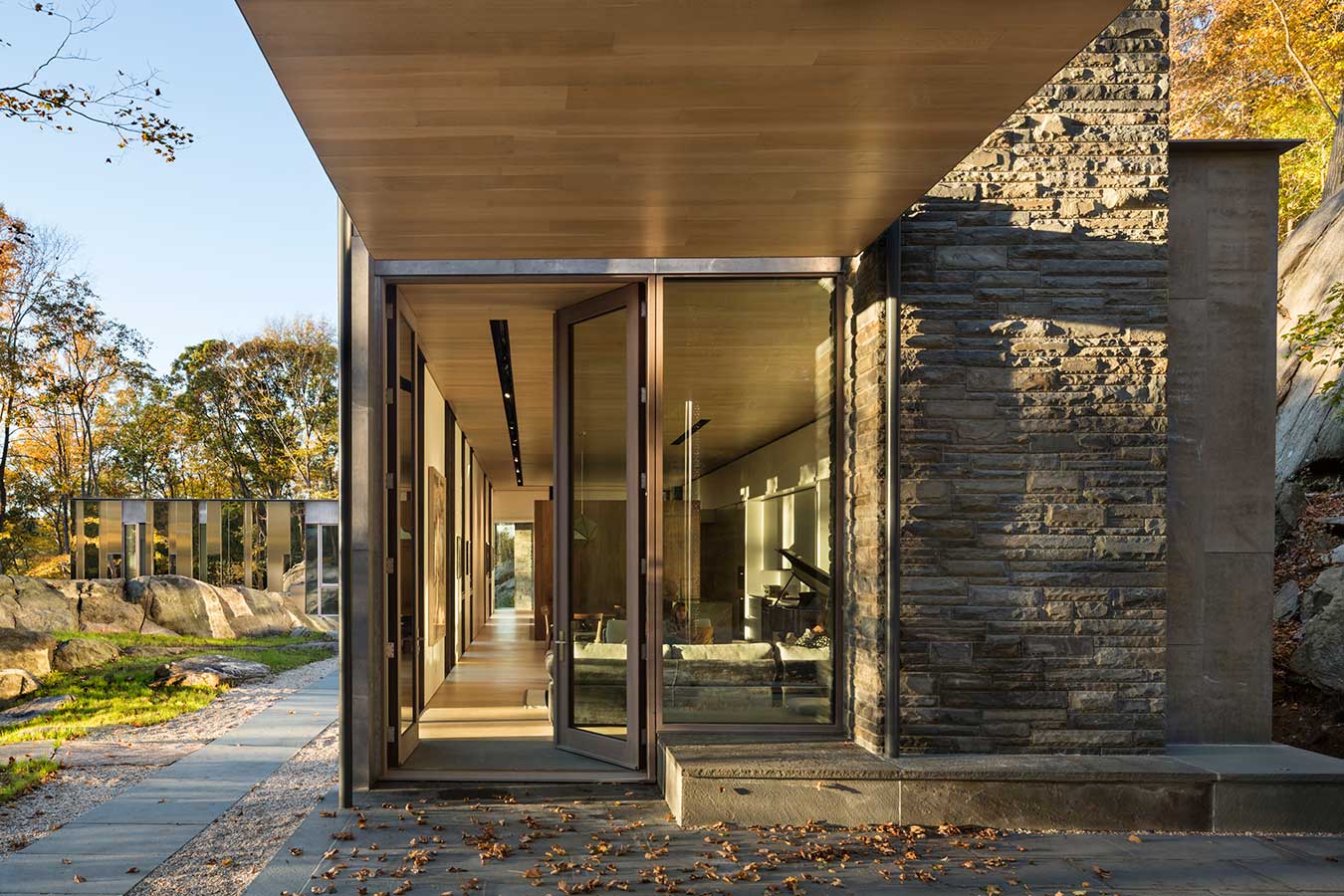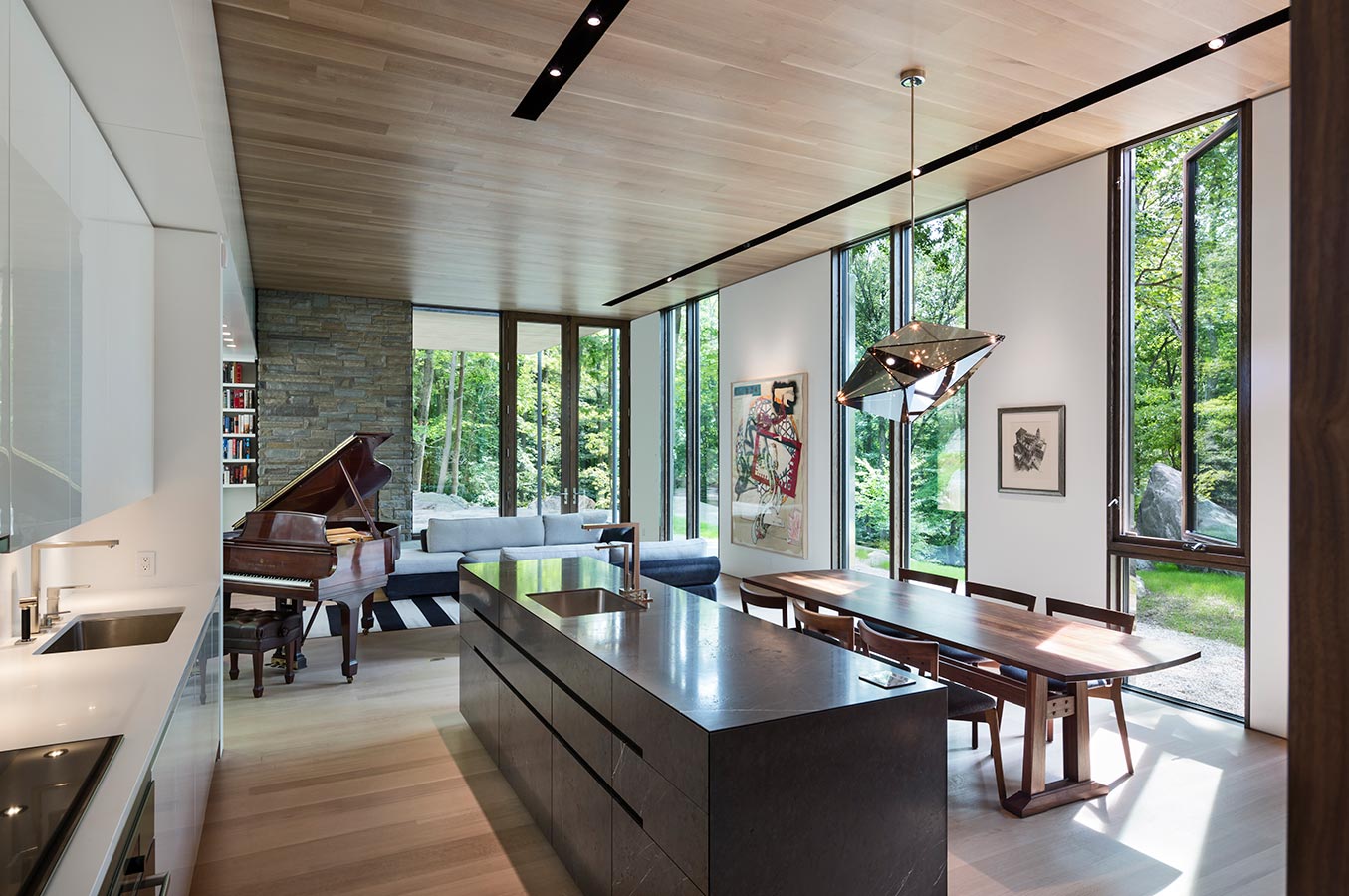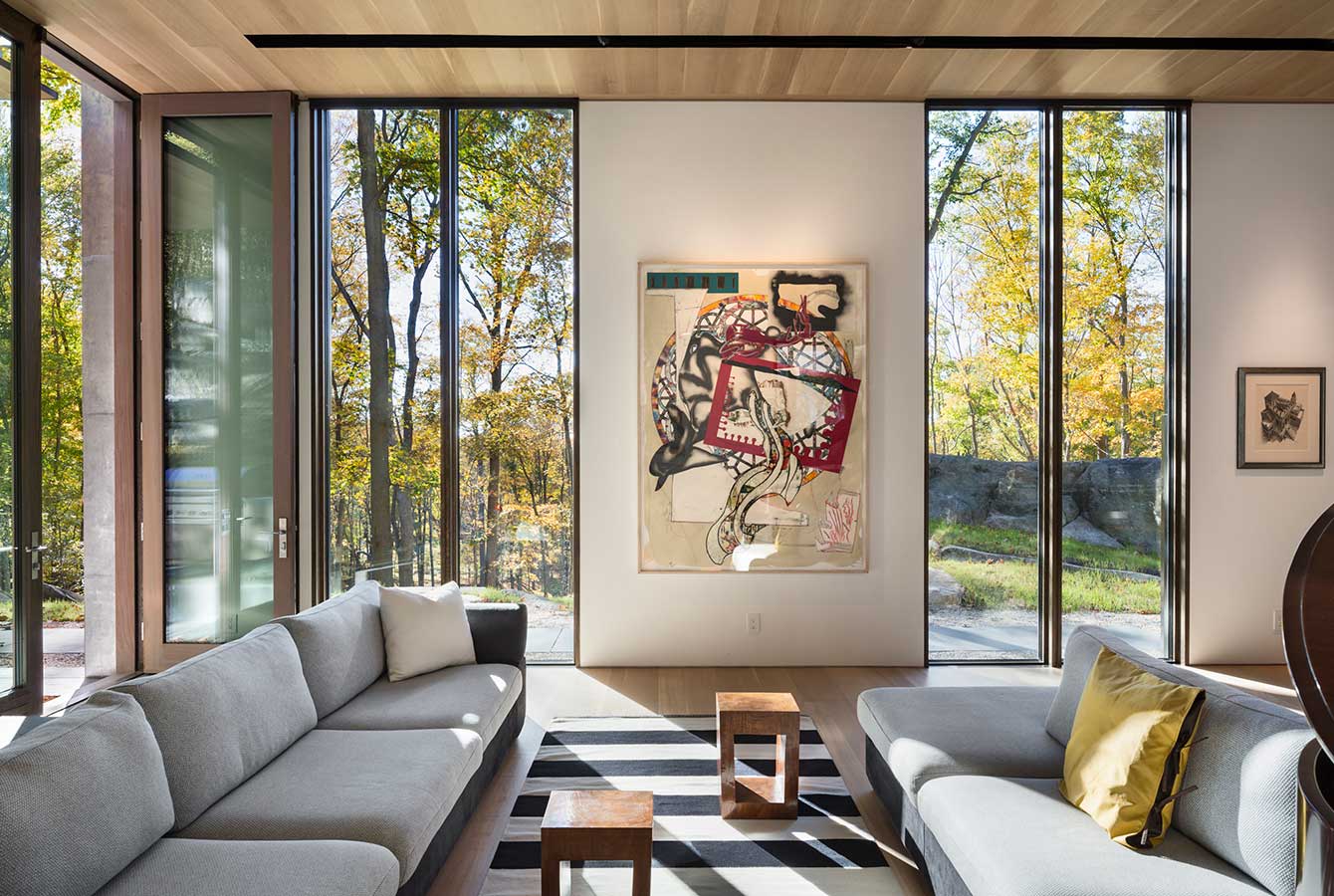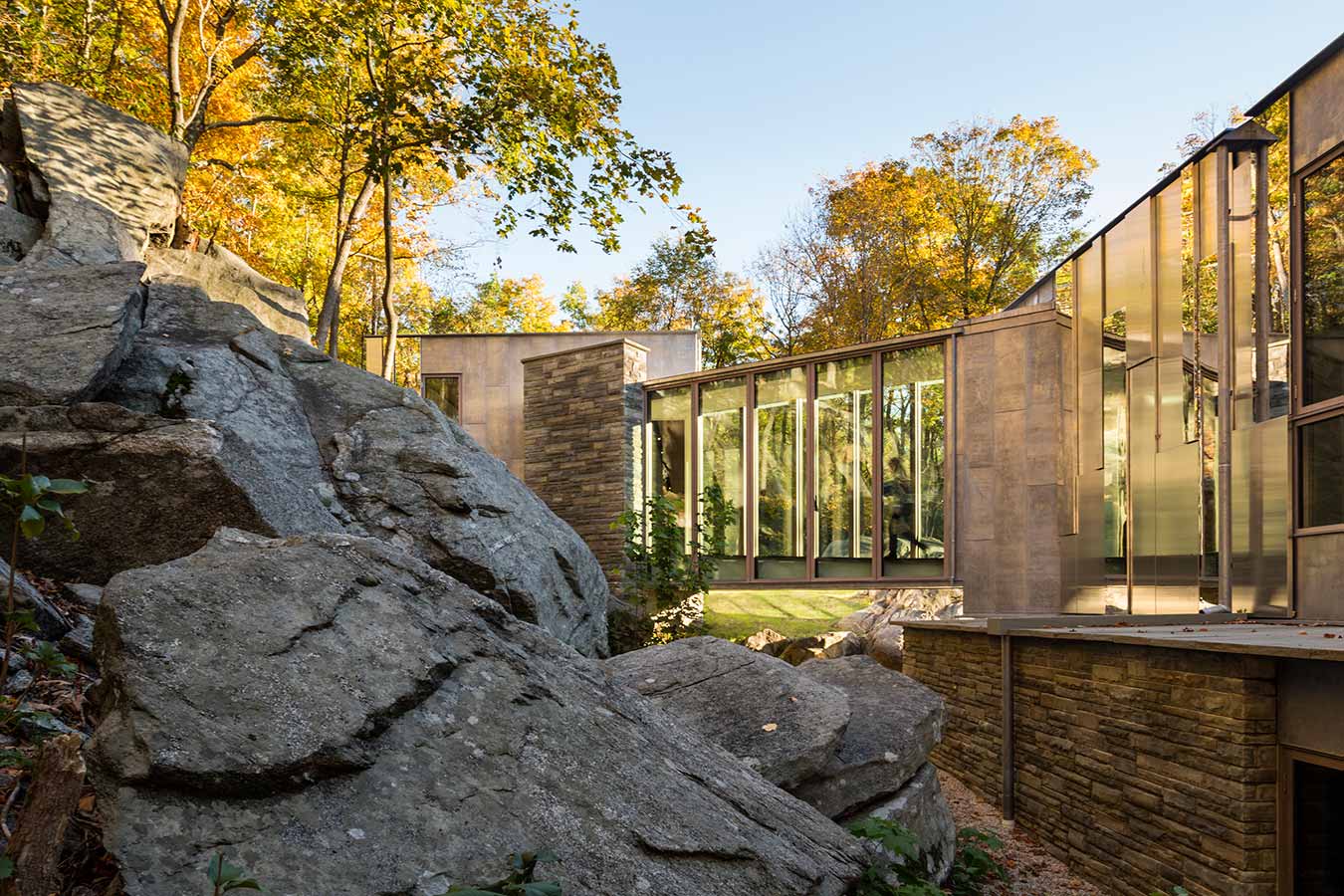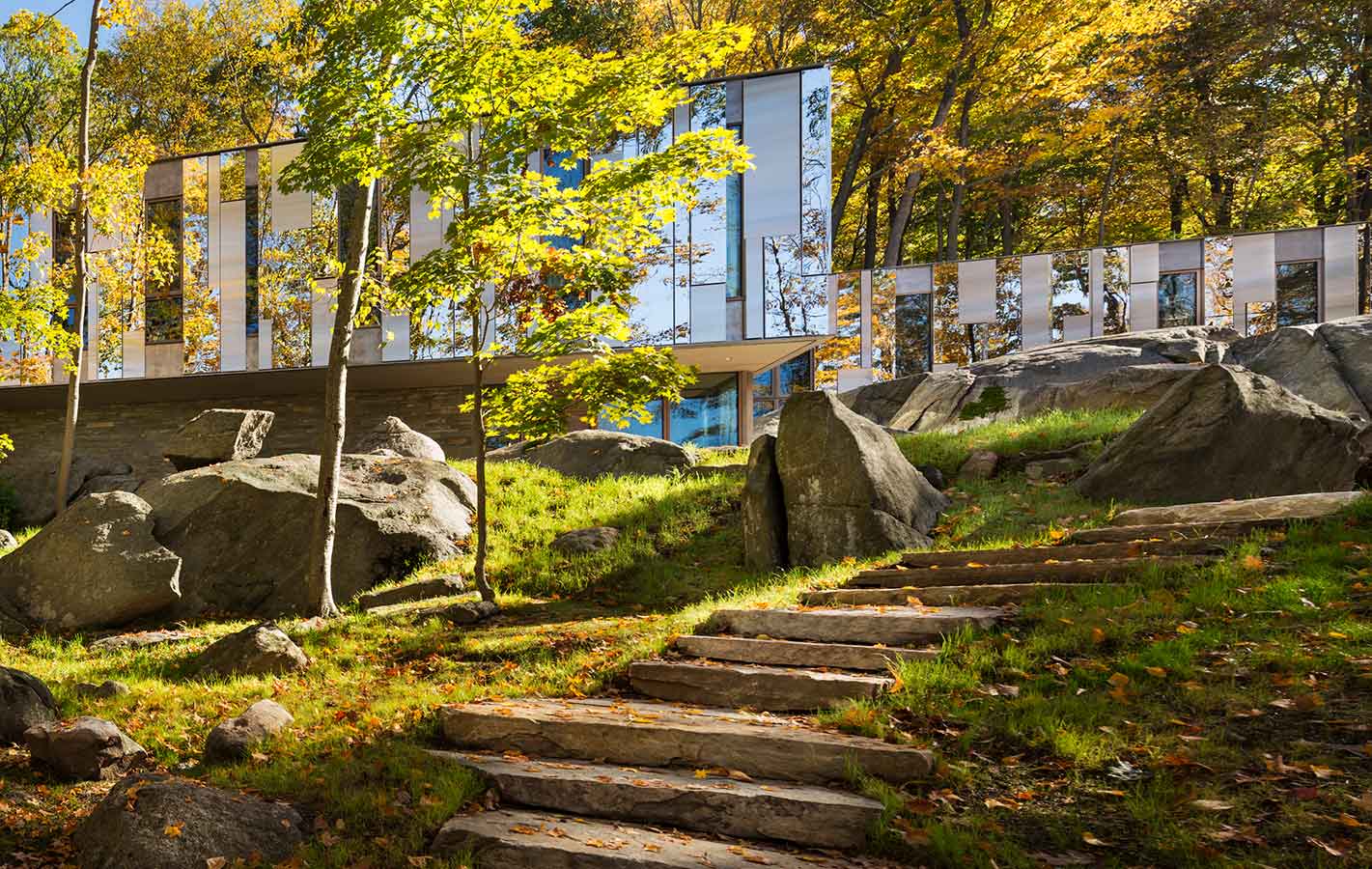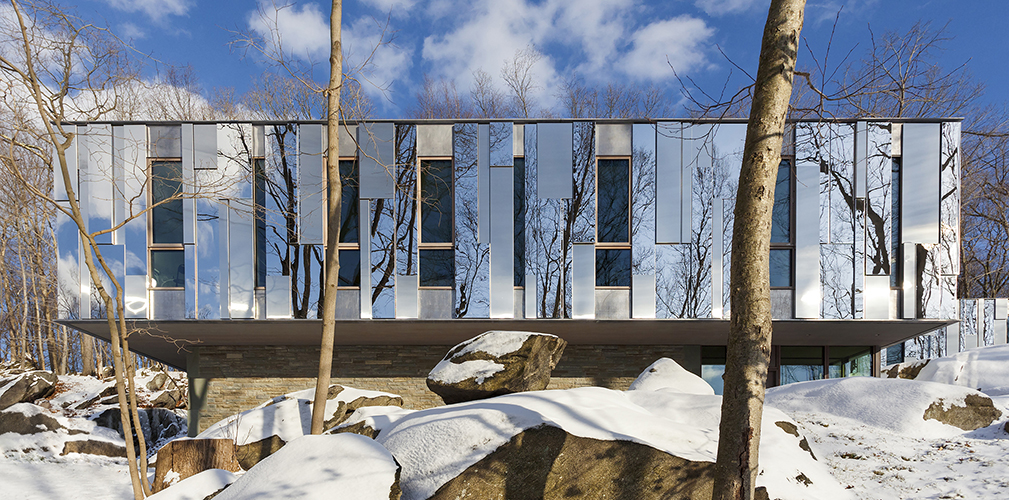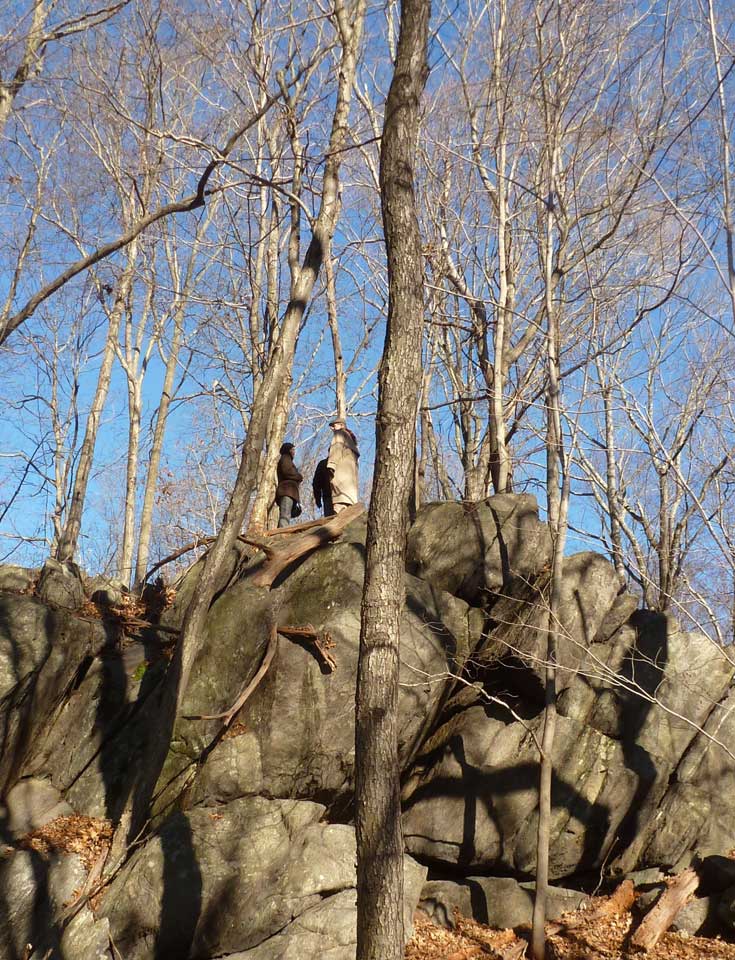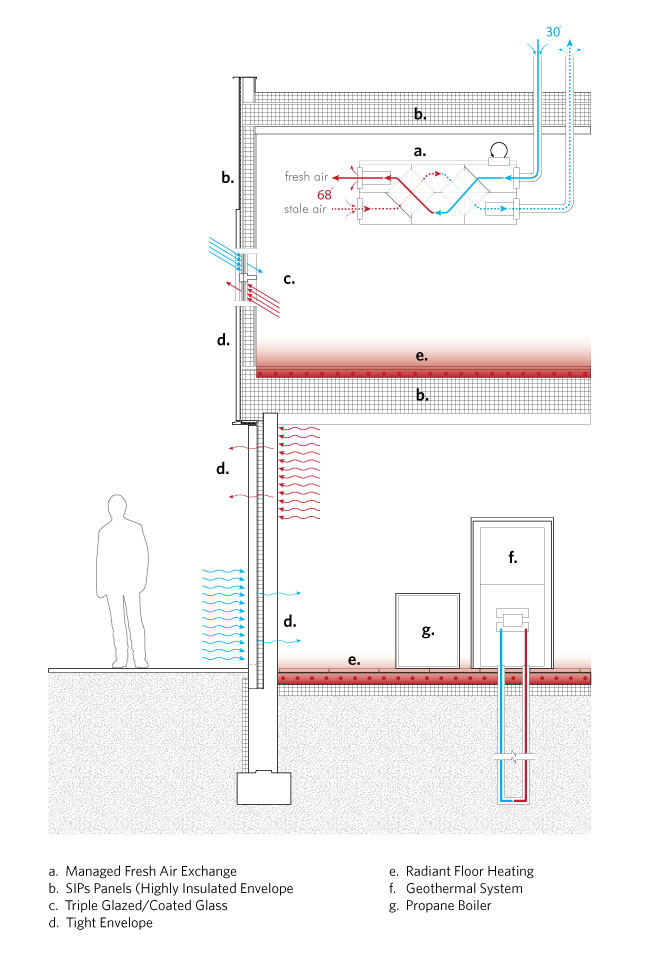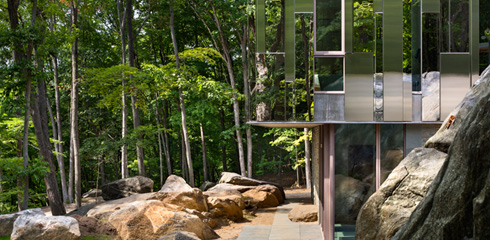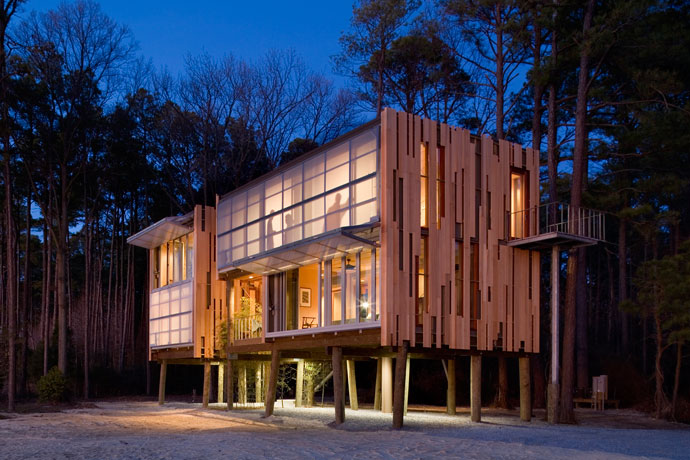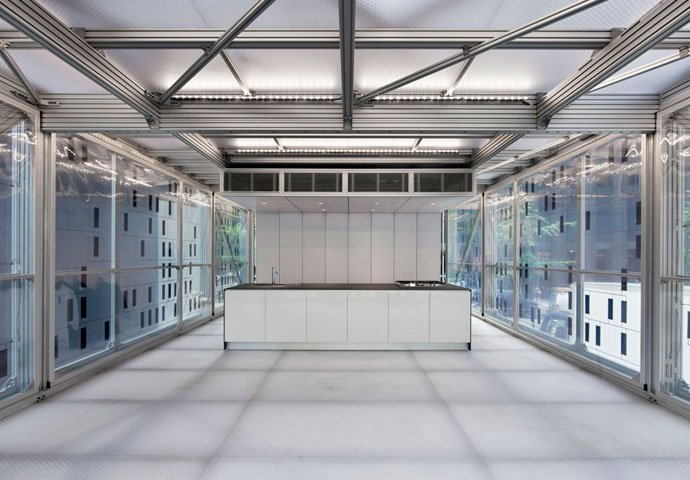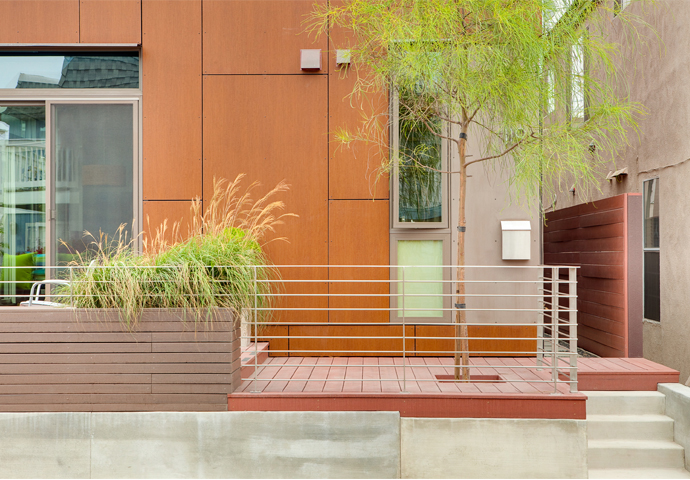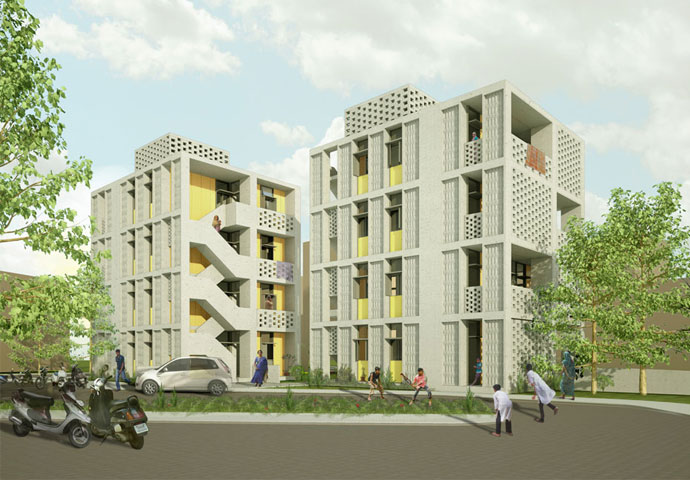How can we design a home that expands and enhances our connection to the natural world?
The site for this home is a south-facing, boulder-strewn escarpment that rises over a hundred feet, from a wetland to the top of a ridge. The owners were drawn to the almost magical sense of tranquility they felt upon their first visit to this heavily forested land, striped with loose-laid fieldstone farm walls from the nineteenth century. Their mandate to the architectural team was simple but not simplistic: they wanted to live in a "house in the woods, of the woods"—to feel the presence of the forest indoors—and to commune quietly with nature and visit with guests within naturally lit, open, airy, warm rooms.
Selecting the "site within the site" was the first challenge of design. On an early site visit, Stephen Kieran met with the home's owners atop a boulder.
The first and most important act of design was selecting the place to anchor the home within the steeply sloped glacial terrain. We were immediately drawn to the ridge itself. Just beneath it were two rock-enclosed “rooms”—one positioned below with another space adjoining it above. Separating these was a small ravine, carrying water from a crevice in the ridge to the wetland below.
Within the rock rooms, we placed three shifting volumes that gently respond to the site's natural slopes and plateaus. The fit of the volumes of the house within these rock enclosures is snug. New stone walls engage the existing stone ledges and boulders in a dialogue that speaks to the forces of nature and man as shapers of place. In response to the dramatic natural scenery, the house itself employs an economy of design that focuses on harmony with the landscape and elemental materiality.
PASSAGE
The home is the culmination of a carefully crafted journey ascending the glacial terrain. The journey begins below the house as the entry drive wraps around a small pond that holds and filters water from the ridge above. The drive up to the home moves across the slope in curving arcs that work with the contour of the land. Ruins of farm walls and new stone-lined swales weave through the boulders and projecting bedrock ledges, managing the movement of water.
The interior of the house is very much an extension of this passage. The path continues beyond the front door, through the crevice between the two rock rooms, beneath the glass bridge, and up a break in the escarpment to the ridge above, with water and humans moving in parallel passage.
WALLS
As the home spatially amplifies the power of physical passage across the terrain, so too do its walls expand and magnify the presence of the spectacular granite outcroppings mingled with the forest. Time of day, season of year, and variations in weather all shift and display in a perpetual dance ornamenting the walls.
Four materials compose the perimeter walls: tin zinc-coated copper, brushed stainless steel, polished stainless steel, and glass. Each of these creates an unfolding reflection of the world beyond and within. The copper receives shadow. The brushed stainless steel abstracts and refracts the general tonality of time of day, weather, and season. The polished stainless steel precisely mirrors form, texture, and color. Lastly, the glass windows are of two worlds. In some conditions, such as in the evening with the lights on, they are transparent and allow views to the interior of the dwelling; at other times, they reflect in a muted way the world outside.
All materials were selected for long-term durability, and to honor both permanence and change, much as the weathered rock and high forest canopy endure yet evolve with day and season.
Structural Insulated Panels provide an exceptional level of resistance to thermal transfer at the walls and roof and are capable of rapid erection. Together, the high insulation, low infiltration, and renewable geothermal energy source assure low energy use across the seasons.
ENERGY
This is a dwelling simultaneously in, with, and about nature. It seeks both an ethic and an aesthetic of energy responsibility. This begins with masonry walls that engage the earth and tightly constructed Structural Insulated Panel (SIP) enclosures that allow for strategic slices in the envelope, opening up the interior to composed views of the landscape.
The SIP enclosures and narrow detail and construction tolerances allow for a highly insulated envelope and incredibly tight construction. The measured and judicious use of wood-framed triple light glazing minimizes thermal transfer “weak spots” and strategically orients glazing to benefit from seasonal heat rejection or gain. As a result, the house will gain solar heat and retain it very efficiently during the winter. During the warmer months, apertures oriented for cross-ventilation greatly reduce the need for mechanical cooling.
At every turn, Pound Ridge House is about expanding our connection to the natural world. It explores an ethical aesthetic that is both evocative and performative, an aesthetic that aims first and foremost to induce wonder at both the timelessness and flux of the natural environment in which we live.


